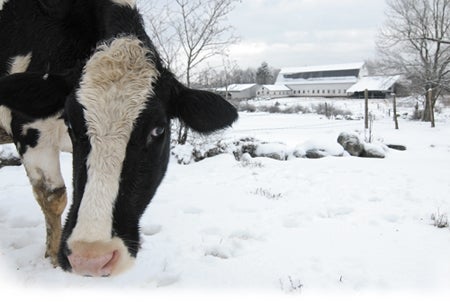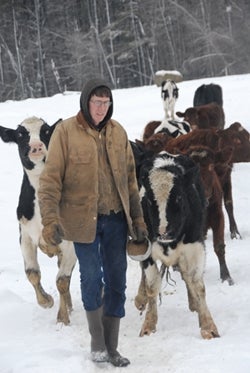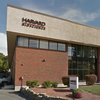Milking It | Local dairy farms strategize to survive
In recent years, the notion of buying local food has gained popularity, and supermarket chains have begun responding to the demand. So it’s no surprise to see the Maine-based Hannaford Bros. grocery chain sign on to a campaign by the New England dairy industry to draw attention to — and raise money for — local dairy farms.
Hannaford is the first supermarket to join with the Keep Local Farms program, which offers assistance to the small farmers who supply the milk that sits on grocery store shelves. The collaboration comes not long after the long-term decline in the economic viability of New England farms was punctuated by a sudden drop in milk prices.
For some farms in the local area, though, the most effective way to stay afloat has been to avoid sending their milk to supermarkets in the first place.
Lifetime Effort
Robert Pearson says his father started Pearson’s Elmhurst Dairy in West Millbury 76 years ago, the same year Robert was born. Today he tends to 100 cows together with his two sons. His daughter, who also has a “real job,” does the bookkeeping, and two grandchildren help out when they’re home from college.
“At one time we did a lot of retail business within the city of Worcester,” he said. “As things changed, there were so many small stores that were selling gallons at cut-rate prices and whatnot that retail business kind of disappeared.”
Today, Pearson said, a few small stores out in the country sell the dairy’s milk, and he also sells wholesale to some businesses like day care centers.
But the economic climate has been punishing. According to Jennifer Bourbeau, director of communication for the New England Dairy Promotion Board, milk costs an average of $1.80 a gallon to produce. In 2009, the price that same gallon commands on the market dropped to 90 cents.
“Many of our dairy farmers went out of business last year, or they’re taking out enormous loans just to break even,” she said.
According to Keep Local Farms, which is based in New Hampshire, two-thirds of New England dairy farms in operation in 1990 have now closed, leaving fewer than 2,000 remaining farms.
Prices are up a bit these days, to around $1.25 a gallon, and Pearson said federal subsidies help improve the picture a little bit. But the main way his farm has survived is precisely because it’s purely a family farm.
“The only way we compete is because we don’t have employees,” he said.
As for the appeal of being a local farm, Pearson said it doesn’t count for much when it comes to his bottom line.
“You might get a few customers that are fussy enough that they want to stay local, but for the most part people are watching their pocketbooks,” he said.
Close To Home
In fact, staying at least fairly local when it comes to dairy is no challenge in New England.
“Dairy is an area where a very high proportion of the product is local within state borders or contiguous states,” said Michael Norton, Hannaford’s director of communications.
So, Norton said, unlike existing Hannaford programs that make a point of sourcing vegetables locally — in some cases even allowing farmers to truck their produce to the nearest store — the Keep Local Farms dairy campaign is more about education. Customers can pick up literature about the importance of dairy farms to local economies. During the month of February, they can also make a contribution at the cash register that flows back to local dairy farmers through the New England Family Dairy Farms Cooperative. Hannaford has 13 locations in Central Massachusetts.
Bourbeau said the cooperative includes about 80 percent of the region’s dairy farms.
For the most part, buying local dairy in New England means buying from small producers. A University of Massachusetts Amherst study found that in 2007 the average herd size in Massachusetts was 65. That’s nearly double what it was in 1970, but it’s still a fraction of the California average of 824.
Bourbeau said local farmers are worth supporting because they help keep open space in New England and because they help maintain the rural economic infrastructure by providing jobs for veterinarians, food suppliers and farm labor.
“They really contribute a lot toward the local economy,” she said.
Like Pearson’s, Coopers’ Hilltop Dairy in Leicester’s Rochdale neighborhood is a family farm with about 100 cows. Marjorie Cooper runs the place together with her three brothers and a nephew, and they hire a few part-time workers.
Cooper said the farm has managed to avoid a serious impact from dropping milk prices because it sells much of its product through its own retail operation. She said Cooper’s sets its own prices, and customers stick around because they like the taste of the milk. Few of the farm’s regulars saw the price of milk dropping at the grocery store and stopped buying from Cooper’s, she said.
“I’m sure there are some who do, but not so many that we notice,” she said.
Cooper said she sees some benefit from the consumer trend toward locally farmed products. Some of her retail customers are seeking out local food sources, she said, and the small wholesale end of Cooper’s business includes Isador’s Fruit & Deli in Oxford, a market and grocery delivery company that focuses on organic and local food.
Cooper said Isador’s owner found the 140-year-old farm through its web site.











0 Comments